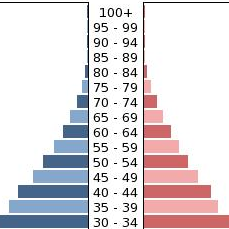
An official website of the United States government
Here’s how you know
Official websites use .gov
A .gov website belongs to an official government organization in the United States.
Secure .gov websites use HTTPS
A lock (
) or https:// means you’ve safely connected to the .gov website. Share sensitive information only on official, secure websites.
-
//
- Census.gov /
- International Database (IDB) /
- International Database Release Notes /
- Release Notes: July 2015
Release Notes: July 2015
Release Notes: July 2015
The release of the IDB contains revised estimates and projections for 24 countries or areas incorporating new data or analysis. All projections have been produced by sex and single years of age up to 100 years and over.
- Armenia
- Austria
- Belgium
- Bulgaria
- China
- Estonia
- Finland
- Iceland
- Iraq
- Israel
- Jordan
- Latvia
- Lebanon
- Lithuania
- Luxembourg
- Malawi*
- Philippines
- Poland
- Slovakia
- South Africa*
- Syria
- Turkey
- Ukraine
- United States
* Denotes that a country has undergone additional analyses to update the estimated effects of HIV/AIDS.
Below is a brief summary of revisions for countries experiencing more than a 500,000 change from the previously estimated 2015 population.
The estimated population of Belgium in 2015 is 11.3 million, which is 870 thousand (8.3 percent) higher than our previous estimate. This increase is due to the combined effects of higher fertility and in-migration, as well as lower mortality.
The estimated population of China in 2015 is 1,367.5 million, which is almost 6.0 million (0.4 percent) higher than our previous estimate. This relatively small increase is due primarily to a slight increase in ages 0 and 1 in the 1990 base population.
The estimated population of Iraq in 2015 is 37.1 million, which is 3.7 million (11.2 percent) larger than our previous estimate. The larger population is due to the combined impact of lower mortality estimates since the mid 1990s, higher estimates of fertility since 2000, and slightly higher in-migration since 2000.
The estimated population of Jordan in 2015 is 8.1 million, 1.5 million (22.6 percent) higher than our previous estimate. This is largely due to increased levels of in-migration due to the conflict in Syria and, to a lesser extent, increased levels of life expectancy at birth.
The estimated population of Lebanon in 2015 is 6.2 million, which is 2.0 million (49.0 percent) higher than our previous estimate. This increase is due to higher estimates of net international migration (for years prior to 2015) and lower estimates of mortality.
The estimated population of Lithuania in 2015 is 2.9 million, which is almost 611 thousand (17.5 percent) lower than our previous estimate. This decrease is due primarily to higher estimates of out-migration.
The estimated population of the Philippines in 2015 is 101.0 million, which is 8.6 million (7.9 percent) less than our previous estimate. The lower estimate is due primarily to higher estimates of mortality and a downward revision to the (1980) base population.
The estimated population of South Africa in 2015 is 53.7 million, 5.4 million (11.2 percent) higher than our previous estimate. The increase is due to lower estimates of mortality.
The estimated population of Syria in 2015 is 17.1 million, 5.8 million (25.4 percent) lower than our previous estimate. The decrease is due to the displacement of population into neighboring countries associated with the country’s conflict starting in 2011 and higher estimates of mortality.
The estimated population of Turkey in 2015 is 79.4 million, which is 3.1 million (3.8 percent) less than our previous estimate. This decrease is due to increased out-migration during the 1990s and 2000s.
Share
Related Information
 Yes
Yes
 No
NoComments or suggestions?


Top

